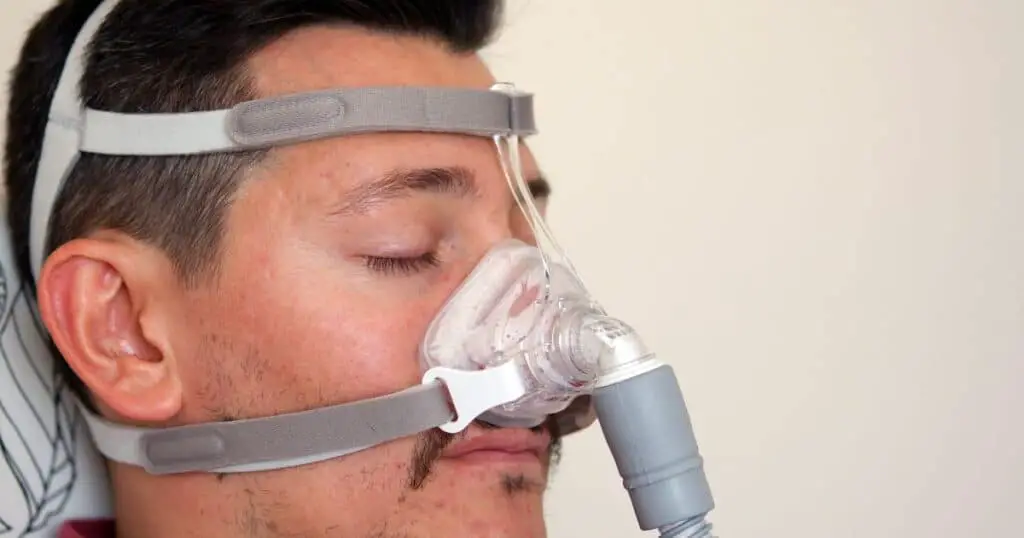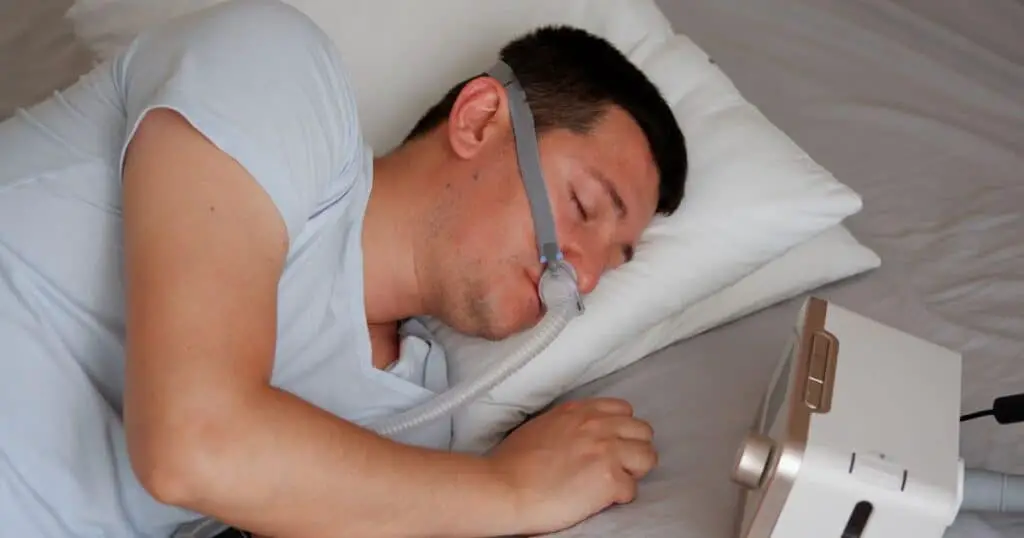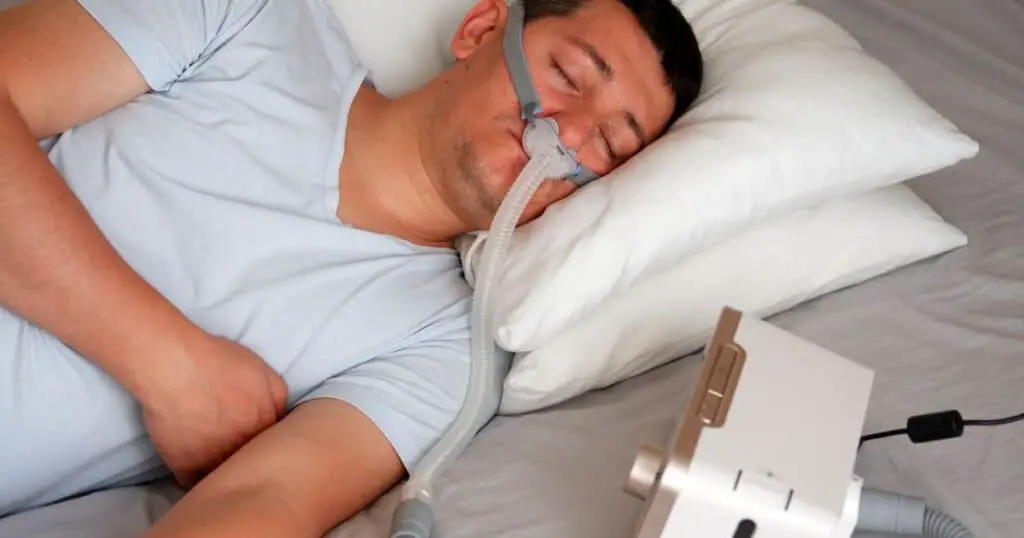Overview of CPAP therapy for sleep apnea
Sleep apnea is a common sleep disorder that affects millions of people worldwide. It is characterized by brief interruptions in breathing during sleep, which can lead to decreased oxygen levels and disrupted sleep patterns. Continuous Positive Airway Pressure (CPAP) therapy is a highly effective treatment for sleep apnea, helping individuals breathe more easily and achieve restful sleep.
CPAP therapy involves the use of a CPAP machine that delivers a constant stream of pressurized air through a mask worn over the nose or mouth. This air pressure helps to keep the airway open, preventing the collapse of the throat muscles that causes sleep apnea. By ensuring a continuous flow of oxygen, CPAP therapy significantly reduces the occurrence of apnea episodes and improves overall sleep quality.
When it comes to choosing a CPAP mask, there are several options available, each designed to cater to different needs and preferences. Among these options, nasal CPAP masks and nasal pillows are particularly popular choices, especially for side sleepers. In this article, we will explore the features, benefits, and potential drawbacks of both nasal CPAP masks and nasal pillows, helping you make an informed decision about which one is best suited for your needs.
But before we delve into the specifics of nasal CPAP masks and nasal pillows, let’s first understand the fundamentals of CPAP therapy and its significance in treating sleep apnea. By gaining a comprehensive understanding of CPAP therapy, you can better appreciate the importance of choosing the right mask for your individual sleep needs. So, without further ado, let’s embark on this enlightening journey into the world of CPAP therapy and the incredible benefits it brings.
Nasal CPAP Masks

When it comes to finding the perfect CPAP mask for side sleepers, nasal CPAP masks are worth considering. These masks, designed specifically to fit snugly over the nose, offer a range of benefits that can enhance the overall comfort and effectiveness of CPAP therapy for individuals who prefer sleeping on their sides.
Nasal CPAP masks come in various shapes and sizes, but they all share a common goal: to provide a secure and comfortable fit while delivering a steady stream of pressurized air to alleviate the symptoms of sleep apnea. With a cushion that covers the nose, these masks create a seal that prevents air from escaping and ensures that the prescribed pressure is maintained throughout the night.
One of the significant benefits of nasal CPAP masks for side sleepers is their ability to accommodate movement during sleep. These masks are designed with stability in mind, featuring straps and headgear that keep them securely in place, even as you shift positions. This ensures that the mask stays properly positioned, allowing for uninterrupted airflow and a more restful slumber.
However, it’s important to note that there can be potential drawbacks for side sleepers using nasal CPAP masks. Some individuals may find that the mask becomes dislodged or shifts slightly during the night, leading to air leakage. This can result in reduced therapy effectiveness and potentially disturb the sleep cycle. Additionally, the bulkier design of nasal CPAP masks may cause slight discomfort for those who are sensitive to pressure or prefer a more minimalistic feel.
To make an informed decision about whether nasal CPAP masks are the right choice for you as a side sleeper, it’s essential to consider your specific needs and preferences. Factors such as comfort, mask fit and adjustability, noise level, air leakage, and personal preference should all be taken into account. Exploring CPAP mask options and reading nasal CPAP mask reviews can provide valuable insights and guidance in finding the best fit for your unique circumstances.
In conclusion, nasal CPAP masks offer a compelling solution for side sleepers seeking optimal therapy performance and comfort. While they may have some potential drawbacks, their ability to provide a secure fit and accommodate movement during sleep makes them a popular choice. By thoroughly researching and considering your individual requirements, you can find the best nasal CPAP mask that suits your needs and helps you achieve a restful night’s sleep.
Nasal Pillows

Nasal pillows, also known as nasal prongs, are a popular alternative to traditional nasal CPAP masks for individuals who prefer sleeping on their sides. These small, lightweight devices consist of two soft, flexible inserts that fit into the nostrils, delivering pressurized air directly into the nasal passages.
Nasal pillows are designed with side sleepers in mind, offering several benefits that make them an attractive option. Firstly, their compact size and minimal contact points provide a more open feel, allowing for a greater range of motion during sleep. Side sleepers can comfortably shift positions without feeling restricted or confined by a larger mask covering their face.
Additionally, the design of nasal pillows minimizes the potential for air leakage, ensuring that the prescribed therapy pressure is effectively delivered throughout the night. This is particularly important for individuals with higher pressure settings, as leakage can disrupt the effectiveness of the treatment. With nasal pillows, side sleepers can rest assured that they are receiving the full benefits of their CPAP therapy without compromising their comfort.
However, it’s important to consider the potential drawbacks of using nasal pillows as well. Due to their direct placement in the nostrils, some individuals may find them initially uncomfortable or experience nasal dryness. This can be mitigated by using a heated humidifier or nasal saline spray to moisturize the nasal passages. Additionally, individuals with nasal congestion or allergies may find nasal pillows less suitable, as they can exacerbate these conditions.
When choosing between nasal CPAP masks and nasal pillows, it ultimately comes down to personal preference. Some side sleepers may prefer the lightweight and unobtrusive nature of nasal pillows, while others may find more comfort and stability with a traditional mask. It’s important to try both options and assess which one provides the best fit, comfort, and effectiveness for your individual needs.
Factors to Consider
When choosing between nasal CPAP masks and nasal pillows for side sleepers, there are several factors to consider that can greatly impact your overall experience with your CPAP therapy. By carefully evaluating these factors, you can ensure that you find the perfect mask that caters to your specific needs and preferences.
Comfort
Comfort is paramount when it comes to CPAP therapy. After all, you’ll be wearing your mask for several hours every night, so it’s crucial that it feels comfortable against your skin. Nasal CPAP masks and nasal pillows both offer different levels of comfort, and what works for one person may not work for another.
Nasal CPAP masks are designed to cover your nose, providing a secure fit and a stable seal. This can be particularly beneficial for side sleepers, as the mask won’t shift or move easily during the night. The cushioning and padding on the mask ensure that it feels soft and gentle on your face, allowing you to sleep peacefully.
On the other hand, nasal pillows are small, lightweight inserts that fit directly into your nostrils, eliminating the need for a mask covering your entire nose. This can provide a more minimalistic and less obstructive experience, perfect for those who prefer a less intrusive sensation while sleeping.
Mask Fit and Adjustability
Another crucial factor to consider is the mask fit and adjustability. A well-fitting mask is essential to ensure optimal therapy and prevent air leakage. Nasal CPAP masks typically offer a wide range of sizes and adjustable features, allowing you to customize the fit according to your facial structure. The straps and headgear can be easily adjusted to achieve a snug yet comfortable fit, ensuring that the mask stays in place even when you shift positions during the night.
Nasal pillows, too, come in different sizes to accommodate various nostril shapes and sizes. The design of nasal pillows enables a secure fit without the need for extensive headgear, making them suitable for side sleepers who may find traditional masks too cumbersome.
Noise Level

For many individuals, a peaceful and quiet sleep environment is essential for a restful night’s sleep. When considering nasal CPAP masks and nasal pillows, it’s important to take into account the noise level generated by each option.
Nasal CPAP masks, with their broader coverage and more extensive components, may produce a slightly higher noise level compared to nasal pillows. However, advancements in mask technology have significantly reduced noise levels, making them much quieter than older models.
Nasal pillows, being smaller and less obtrusive, tend to create less noise during operation. This can be particularly advantageous for side sleepers who are sensitive to noise disturbances and prefer a quieter sleep environment.
Air Leakage
Air leakage is a common concern for CPAP users, as it can compromise the effectiveness of the therapy. When evaluating nasal CPAP masks and nasal pillows, it’s important to consider their respective abilities to minimize air leakage.
Nasal CPAP masks, with their larger coverage area, generally provide a more secure and reliable seal, reducing the chances of air leakage. The mask’s cushioning and adjustable straps ensure that it stays in place, even when you change positions during the night.
Nasal pillows, while smaller in size, can also provide a secure seal when properly fitted. However, they may require more precise adjustments to prevent any air leakage. It’s crucial to find the right size pillows and ensure a proper fit to minimize the risk of air escaping.
Personal Preference
Last but certainly not least, personal preference plays a significant role in selecting the ideal CPAP mask for side sleepers. Everyone has different preferences when it comes to their sleep experience, and what works for one person may not work for another.
Some individuals may prefer the feeling of a traditional nasal CPAP mask, appreciating the stability and coverage it offers. Others may gravitate towards the minimalistic design of nasal pillows, enjoying the freedom of movement they provide.
Ultimately, choosing between nasal CPAP masks and nasal pillows for side sleepers depends on your individual needs, preferences, and comfort level. It’s essential to consider all the factors mentioned above and even try out different options to determine which one suits you best.
By carefully evaluating the comfort, mask fit and adjustability, noise level, air leakage, and personal preference, you can make an informed decision that will enhance your CPAP therapy experience and help you achieve restful nights of sleep.
To learn more about the different cpap mask options, you can visit cpaphackers.com.
Tips for Side Sleepers
Finding the Right Position:
For side sleepers, finding the right position can significantly enhance the comfort and effectiveness of CPAP therapy. It is crucial to position oneself in a way that allows for optimal airflow and minimizes mask leakage. One helpful tip is to try sleeping with a pillow between the legs. This can help align the spine and reduce pressure on the hips, making it easier to maintain a comfortable position throughout the night. Additionally, placing a pillow behind the back can provide extra support and prevent rolling onto the stomach or back. Experimenting with different pillow configurations can help side sleepers find the perfect balance between comfort and proper alignment.
Using Pillows for Support:
Pillows are not just for comfort; they can also play a vital role in supporting the CPAP mask and tubing for side sleepers. Consider using a pillow that has cutouts or contours specifically designed for accommodating the mask and tubing. These types of pillows help prevent the mask from shifting or becoming dislodged during sleep. Alternatively, some individuals find it helpful to use a small travel pillow or a rolled-up towel to create a supportive barrier between the mask and the bed. This technique can help reduce pressure on the mask and prevent air leakage, ensuring a more restful night’s sleep.
Adjusting Mask Straps:
Properly adjusting the mask straps is essential for side sleepers using CPAP therapy. Take the time to ensure that the straps are securely fastened but not too tight. Remember, a snug fit is necessary to maintain a proper seal, but overly tight straps can cause discomfort and skin irritation. It is recommended to adjust the straps while in a side-sleeping position, as this will provide a more accurate fit. If necessary, refer to the manufacturer’s instructions or consult a healthcare professional for guidance on how to properly adjust the straps for optimal comfort and effectiveness.
Incorporating these tips into your sleep routine can greatly enhance the experience of using CPAP therapy as a side sleeper. By finding the right position, using pillows for support, and adjusting mask straps, you can maximize comfort, minimize air leakage, and ensure a more restful night’s sleep. For more information on CPAP mask options, check out our article on cpap mask options.
Conclusion
In conclusion, when it comes to choosing the best CPAP mask for side sleepers, both nasal CPAP masks and nasal pillows offer unique advantages and considerations.
Nasal CPAP masks, with their larger design and wider coverage, provide a stable and secure fit for side sleepers. They offer excellent air pressure delivery and are particularly beneficial for individuals who require higher pressure settings. However, some side sleepers may find the size of these masks cumbersome and experience discomfort due to the larger surface area in contact with their face.
On the other hand, nasal pillows present a more compact alternative, with small prongs that fit directly into the nostrils. This design allows for a minimalistic and lightweight experience, making it an appealing option for side sleepers who value freedom of movement during the night. However, it’s important to note that nasal pillows may be less effective for individuals who require higher pressure levels or those who experience nasal congestion.
When making a decision, it is crucial to consider several factors. Comfort should be a top priority, as it ensures a restful night’s sleep. The fit and adjustability of the mask are also critical to prevent air leakage and ensure optimal therapy. Additionally, noise level can impact the overall sleeping experience, so selecting a mask with minimal noise output is advisable. Finally, personal preference plays a significant role, as individual comfort and satisfaction are key to long-term adherence to CPAP therapy.
For side sleepers, there are a few tips that can enhance the experience with CPAP therapy. Finding the right sleeping position, such as lying on one’s side with appropriate pillow support, can alleviate pressure and promote better airflow. Additionally, adjusting the mask straps to achieve a secure and comfortable fit is essential for minimizing mask movement and potential air leakage.
In summary, choosing between nasal CPAP masks and nasal pillows for side sleepers depends on personal preferences, comfort, and the specific needs of each individual. It is recommended to consult with a healthcare professional or sleep specialist to determine the most suitable option. Don’t forget to explore cpap mask options and read nasal CPAP mask reviews to gain further insights into the best nasal CPAP masks available in the market.
Remember, a good night’s sleep is within reach with the right CPAP mask choice!

Damon Wiseley is a Registered Respiratory Therapist and Certified Pulmonary Function Technologist.
